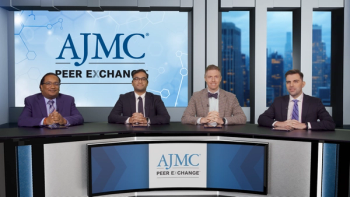
Prognosis and Treatment Strategies in Myelofibrosis: Risk Assessment and Therapeutic Goals
Aaron Gerds, MD, MS, explores myelofibrosis risk assessment, treatment goals, and therapeutic strategies, including JAK (Janus kinase inhibitors) inhibitors and transplant considerations.
Episodes in this series

This is a video synopsis/summary of a Guidelines featuring Aaron Gerds, MD, MS.
Gerds discusses risk assessment in myelofibrosis and its critical role in treatment decisions. He emphasizes the significance of understanding prognosis to determine appropriate interventions. The Dynamic International Prognostic Scoring System is highlighted as a widely used prognostic model, considering factors like molecular data and cytogenetics. Gerds introduces the Merit-Based Incentive Payment System score for molecular data evaluation and the Myelofibrosis Secondary to PV and ET – Prognostic Model (MYSEC-PM) for patients transitioning from essential thrombocythemia or polycythemia vera to myelofibrosis. Prognosis aids in referrals for stem cell transplant and influences participation in clinical trials based on disease risk categories. Moving to treatment goals, Gerds underscores the importance of addressing symptoms and splenomegaly. JAK inhibitors, including ruxolitinib, fedratinib, pacritinib, and momelotinib, focus on improving patients' quality of life. The discussion provides insights into the nuanced approach to MF treatment, considering individual patient characteristics and disease risk levels.
Video synopsis is AI-generated and reviewed by AJMC® editorial staff.
Newsletter
Stay ahead of policy, cost, and value—subscribe to AJMC for expert insights at the intersection of clinical care and health economics.








































